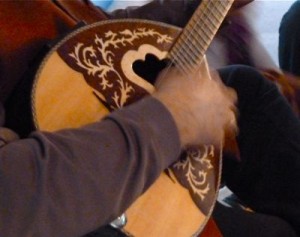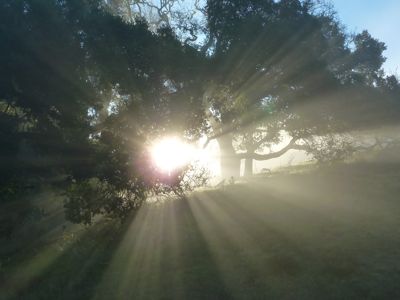Full-Spectrum Forgiveness, Part 4: Unity with Others

It is not by shutting out what we consider negative that we Awaken and become truly loving, but by learning to embrace ALL. There IS NOTHING more positive. We begin within.
(Following from Part 3) The forgiveness issues that came up for me in the retreat were not about feeling wronged or significant personal relationships. The monumental type of issue had to do with what might be called genetic memory, ancestral memory, or cellular memory. This is the faculty by which a horse, raised in an area with no snakes, instinctively recognizes snakes. This type of issue could also be called ‘past life.’ Terms and belief systems are unimportant to my point. My experience involved a dark and terrible sense that I had committed “unforgivable acts”, somewhere in the murky past—beyond my physical existence.
Carl Jung, who initiated Depth Psychology, discussed at length “the collective consciousness.” He was talking about the group mind or One mind shared by all. Intensive spiritual work involving unity with others touches in to this level of experience, if we can allow it. This is the reality that allows us to link with or perceive others across space and time. At the level of experience where we are all directly linked, and always have been, we have ALL committed acts we must stretch to forgive. We also sense these acts in others.
He was talking about the group mind or One mind shared by all. Intensive spiritual work involving unity with others touches in to this level of experience, if we can allow it. This is the reality that allows us to link with or perceive others across space and time. At the level of experience where we are all directly linked, and always have been, we have ALL committed acts we must stretch to forgive. We also sense these acts in others.
The following incident speaks to the urge to find forgiveness at a profound and transpersonal (bigger than personal) level:
After seeing a movie together I was in a car with my mother and two other people. Somehow the conversation turned to bombs. I mentioned that children often have great fear of losing parents and homes due to bombs. I flashed on a fantasy I had as a child. In my fantasy—which I shared—I imagined having a huge underground bomb shelter. Into that shelter I brought a hand-picked selection of people who were totally honest, loving, and contributed to others. I wanted to create a fantasy world in which we could emerge and enjoy feeling safe without worrying about being harmed, cheated, or abused.
My Mother said, “I bet you fantasized being the person who dropped the bombs.”
Her comment was like dropping a bomb. Shocked and alienated I went silent for the rest of the evening. I was talking about wanting to feel safe as a child and I felt she was telling me I was a monster inside.
After the ten-day retreat I had enough internal support to get up the guts to ask her about what she had said. I said, “I’d like to give you the opportunity to take back something you said before.” I felt pretty shaky and vulnerable telling her what the topic was. Her response surprised me.
She told me that what she intended to say was: “Have you ever imagined being the person who dropped the bombs?”
Given her history of working as a clinical psychologist in a Veterans Hospital mental ward, she had certainly worked with men who had to come to terms with doing just that. Lots of people have been in similar positions, in service and under orders.
 I was initially startled, then found her question to be profoundly spiritual—and positive. She had tears in her eyes. She was exploring what it meant to be fully and completely human in some of the most horrific human experience yet seeking to reclaim full feeling. Whether or not one believes in war (she does not) is irrelevant. I am talking about the type of love it takes to fully accept one’s self or another person in spite of acts that abhor us.
I was initially startled, then found her question to be profoundly spiritual—and positive. She had tears in her eyes. She was exploring what it meant to be fully and completely human in some of the most horrific human experience yet seeking to reclaim full feeling. Whether or not one believes in war (she does not) is irrelevant. I am talking about the type of love it takes to fully accept one’s self or another person in spite of acts that abhor us.
We’re talking about hard-core positive love here, not gloss-over-and-and-avoid-the-dark-side surface dressing. Full-spectrum forgiveness takes that kind of clout.
Remember we are forgiving the person—the soul who found itself in dire circumstances—not the acts they commit. We are forgiving the soul that is somehow pure beneath all the confusion, weakness, feeling trapped, having the heart closed down after too much pain, getting twisted. We are not saying that the acts are okay. We may aim to remember the source and the wellspring where purity-of-being is hidden at the person’s very core, however buried and polluted they became after one miss-step led to the next. Unity with others requires finding a way to manage the whole range of human behavior.
Are you willing to discover the humanity underneath unthinkable acts?
How do YOU handle it when you cannot accept what has happened?

















